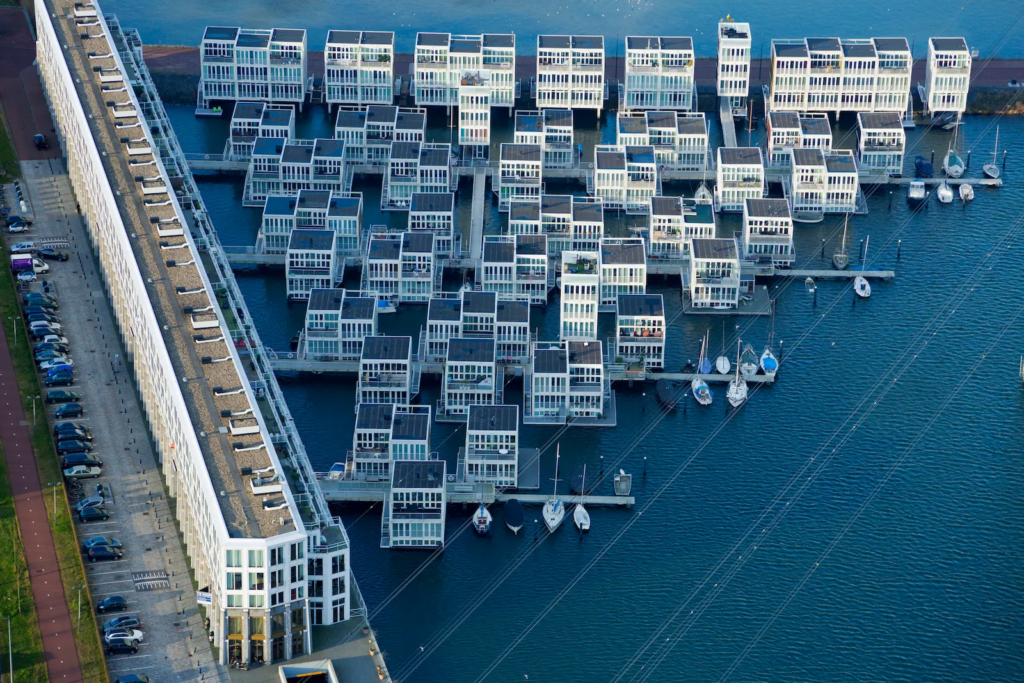By Kyle Chayka.
In a corner of the Rijksmuseum hangs a seventeenth-century cityscape by the Dutch Golden Age painter Gerrit Berckheyde, “View of the Golden Bend in the Herengracht,” which depicts the construction of Baroque mansions along one of Amsterdam’s main canals. Handsome double-wide brick buildings line the Herengracht’s banks, their corniced façades reflected on the water’s surface. Interspersed among the new homes are spaces, like gaps in a young child’s smile, where vacant lots have yet to be developed.
For the Dutch architect Koen Olthuis, the painting serves as a reminder that much of his country has been built on top of the water. The Netherlands (whose name means “low countries”) lies in a delta where three major rivers—the Rhine, the Meuse, and the Scheldt—meet the open expanse of the North Sea. More than a quarter of the country sits below sea level. Over hundreds of years, the Dutch have struggled to manage their sodden patchwork of land. Beginning in the fifteenth century, the country’s windmills were used to pump water out of the ground using the hydraulic mechanism known as Archimedes’ screw. Parcels of land were buffered with raised walls and continuously drained, creating areas, which the Dutch call “polders,” that were dry enough to accommodate farming or development. The grand town houses along Amsterdam’s canals, as emblematic of the city as Haussmann’s architecture is of Paris, were constructed on thousands of wooden stilts driven into unstable mud. As Olthuis told me recently, “The Netherlands is a complete fake, artificial machine.” The threat of water overtaking the land is so endemic to the Dutch national psyche that it has inspired a mythological predator, the Waterwolf.
READ MORE at newyorker.com.

